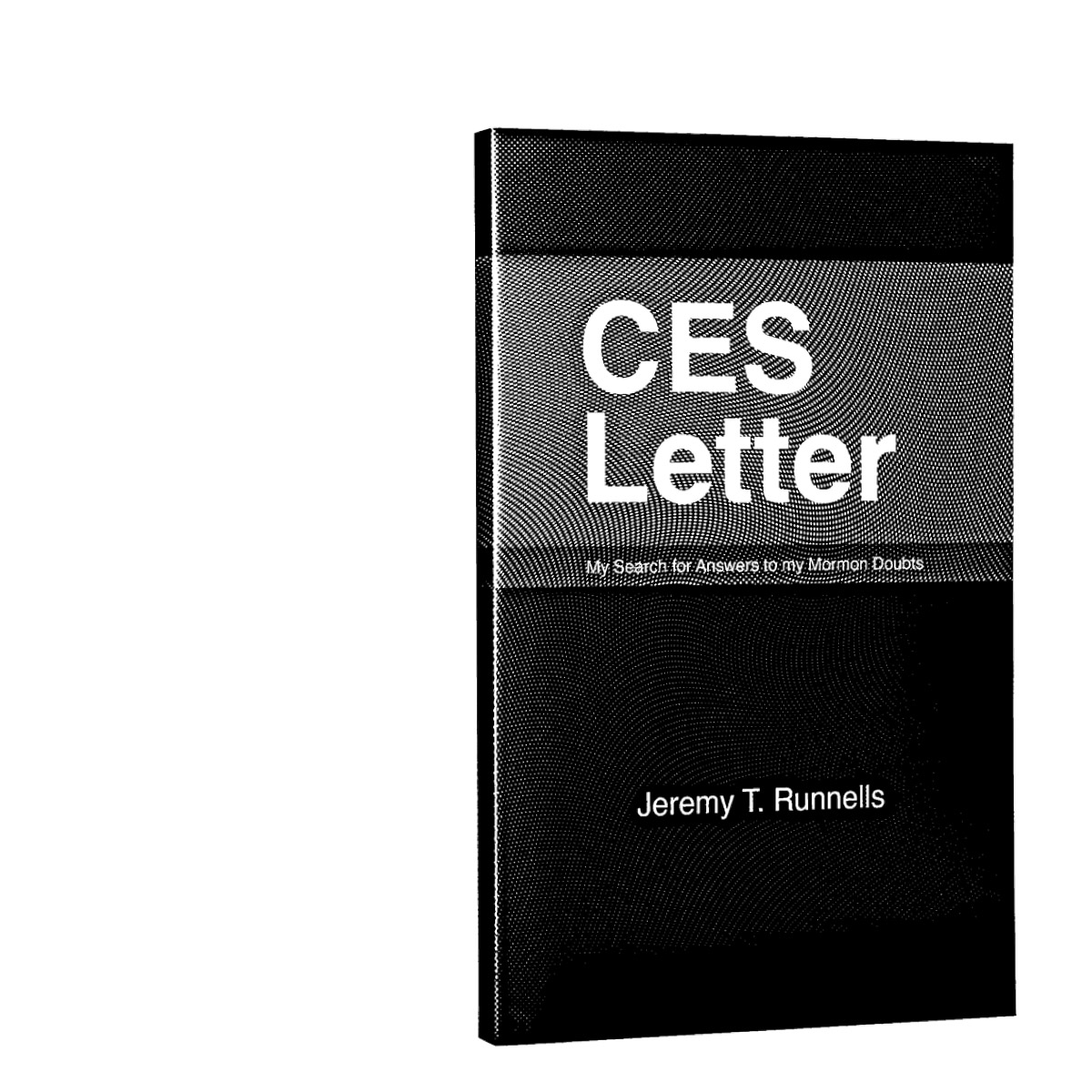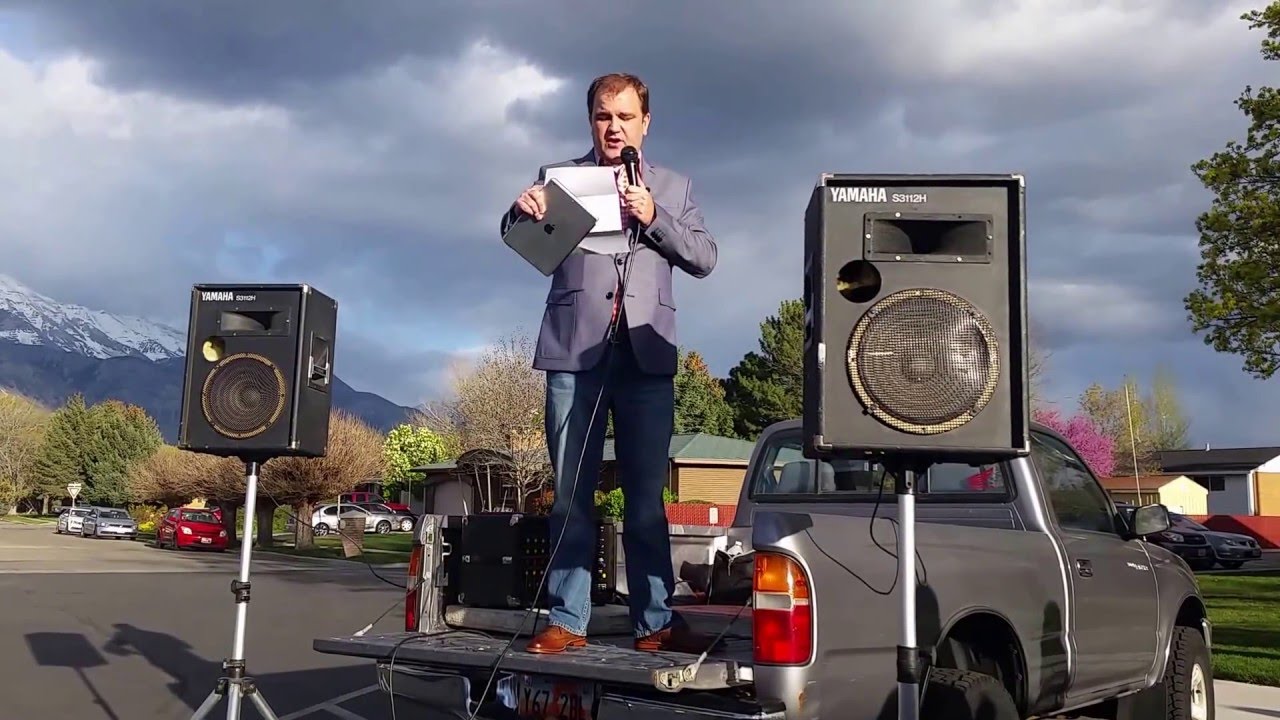CES Letter

What is the CES Letter?
It's a document written by Jeremy Runnells[BIO] that lists "many serious problematic challenges to [the] foundational truth claims" of the Church.[1]
It is referred to as the CES Letter because Runnells originally wrote it to a Church Educational System (CES) employee.[2]
Timeline of events related to the CES Letter
February 2012
October 9, 2012
November 15, 2012
Runnells asks for advice on an ex-Mormon forum on Reddit, saying "I have a TBM ["True Believing Mormon"] wife who still takes kids to church. I want to know the most effective way to save them from Mormonism."[6]
Early March 2013
Runnells begins writing a document describing his concerns about the history and doctrine of the Church at the request of a Church Educational System (CES) director. The director was a friend of Runnells's grandfather and was "just trying to help."[7]
March 26, 2013
Runnells shares an initial draft of the document intended for the CES Director on the ex-Mormon forum on Reddit asking for "feedback/advice."[8]
April 12, 2013
Late April 2013
Runnells sends "Letter to a CES Director: Why I Lost My Testimony" to the unnamed CES director.[11]
June 2013
July 30-31, 2013
Runnells "crowdsources" rebuttals to the FAIRMormon response on the ex-Mormon forum on Reddit.[14]
August 2013
Runnells launches cesletter.com, which hosts the letter as well as rebuttals against criticisms of the letter.[15]
February 2014
In response to the criticisms from FAIRMormon, Runnells publishes "Debunking FairMormon" on the CES Letter website.[16]
June 12, 2014
February 11, 2015
July 26, 2015
Runnells states that the "target audience" for the CES Letter is the "fence sitters" and that "[TBMs] are not my target audience because they're not ready for it. I'm looking for the doubters."[20]
April 1, 2016
April 17, 2016
October 2016
Runnells speaks on "Restoring Your Own Power and Liberty" at the ExMormon Foundation Conference.[25]
December 3, 2017
The 138-page CES Letter 2.0 is released with the "biggest and most substantial change" being the "softened tone" compared with previous versions.[26]
What is the purpose of the CES Letter?
The letter was originally written to a family friend of the Runnells who worked for the Church Educational System, but it was also posted to Reddit so that others could "personalize" and share it with their "TBM loved ones."[27] The stated purpose has evolved over time.[28]
Who is the intended audience of the CES Letter?
In 2015, Runnells stated that "[TBMs] are not my target audience because they're not ready for it. I'm looking for the doubters."[29] He also added, "The target audience are the fence sitters."[30]
What's the main point of the CES Letter?
The CES Letter argues that the Church and its leaders are deceptive and inconsistent,[31] that the Church has an insurmountable number of problems with its truth claims,[32] and that believing in it is either "delusional" or "insane."[33]
So what's in the CES Letter?
The document is a compilation of frequent criticisms of the Church,[34] including the multiple accounts of the First Vision, the Kinderhook Plates, Joseph Smith's polygamy, the Book of Abraham translation, and more.[35]
Is the CES Letter accurate?
Yes and no. It is a mix of facts and misrepresentations[36] written into a narrative based on the premise that the Church is deceptive and "cannot possibly be true."[37]
What have reviewers of the CES Letter said about it?
Both Latter-day Saints and former Latter-day Saints have responded to the CES Letter.[38] It is generally condemned by Latter-day Saints as being poor scholarship with an obvious bias, and largely considered accurate and praiseworthy by former Latter-day Saints for bringing important issues to light (see below).[39]
Negative reviews of the CES Letter
| Source | Comment |
David Snell[BIO] | "The CES Letter makes hundreds upon hundreds of claims. Whether intended or not, sometimes what the Letter does is simply overwhelm readers with so much negative information that they’re thrown into a panic before really taking a deep breath and investigating individual claims. . ." "Some of the information in the Letter is simply true. Some, as far as I can tell, is patently false (and hopefully those are honest mistakes). And I think some information lacks important nuance or leaves out additional relevant information."[40] |
C. Randall Nicholson[BIO] | "Like most materials critical of the church, the CES Letter has nothing new to say. . . So why do its acolytes think it's such a big screaming deal and obsessively spam church-related discussions with links to it? I believe it's because, in a particularly egregious example of the "big list" fallacy, it substitutes quantity for quality by compiling so many criticisms into so little space."[41] |
Michael Ash[BIO] | "The CES Letter has bamboozled a number of Latter-day Saints . . . [the Letter] can create heartburn in the spiritual stomachs of some members—this is going to happen when you eat a habanero pepper that you thought was a cherry tomato."[42] |
Daniel Peterson[BIO] | "My impression—I will give you the bottom line—is that the author spent too little time and effort looking at these questions, that he “jumped ship” too soon, that there are answers, at least adequate, and in some cases really much more than adequate to just about every issue raised."[43] |
Jim Bennett[BIO] | "The CES Letter is bad scholarship making arguments that its own author doesn’t seem to understand, citing sources he hasn’t bothered to read. Overall, its charges do not stand up to scrutiny."[44] |
Positive reviews of the CES Letter
Source | Comment |
Grant Palmer[BIO] | "Jeremy Runnells’ CES Letter is an excellent summary of the foundational problems of the Church of Jesus Christ of Latter-day Saints. Given the generous amount of time, energy, and money donated to the LDS Church, members owe it to themselves to take a serious look beyond what is taught in Church meetings."[45] |
Hans Mattsson[BIO] | “Runnells’ CES Letter presents many historical issues concerning LDS history, which for many members has been a wake-up call. The letter deserves to be read, both in and out of the LDS community."[46] |
John Dehlin[BIO] | “Meticulously researched, this book represents Jeremy’s sincere, heartfelt, and herculean effort to gather and discern the basic evidence regarding LDS church origins. It is an incredible labor of love. . . I know of no other resource—on the Internet or in print—that is more accurate, concise, and yet comprehensive. I highly recommend this book.”[47] |
Lindsay Hansen Park[BIO] | "For me, I think the CES letter is a good compilation of the inaccuracies and problems with the LDS church. It’s a great place to go for a bullet list of issues."[48] |
Has anyone gone through the CES Letter and made corrections or refutations?
Yes. There are several refutations of the CES Letter which have addressed misrepresentations and distortions of information (see below).[49]
Refutations of the CES Letter
Document | Notes |
Bamboozled by the "CES Letter"[50] | This 91-page document was written and published online by Michael Ash[BIO] in 2015. Ash identifies and responds to 93 unique claims in the CES Letter. |
Response to "Letter to a CES Director: Why I Lost My Testimony (CES Letter: My Search for Answers to my Mormon Doubts) and "Debunking FAIR's Debunking"(Debunking FairMormon)[51] | Published on the FAIR[BIO] website, this refutation consists of thousands of pages responding to the CES Letter as well as Runnells's "debunking FairMormon" article, which was published on the CES Letter website. |
dice1899's CES Letter Rebuttal[52] | Sarah Allen[BIO] is the author of this 70-part series published on Reddit from 2021–2022. |
Eye of the Beholder, Law of the Harvest: Observations on the Inevitable Consequences of the Different Investigative Approaches of Jeremy Runnells and Jeff Lindsay[53] | This essay by Kevin Christensen[BIO] was published in 2014 in Interpreter and is a meta-analysis of the CES Letter and Jeff Lindsay's rebuttal to it.[BIO] |
A CES Letter Reply: Faithful Answers for Those Who Doubt[54] | This 372-page refutation by Jim Bennett was updated in 2018. It is a line-by-line response to the CES Letter in book format. |
CES Letter: A Closer Look[55] | This refutation, organized by Brian Hales,[BIO] has several contributors and goes claim-by-claim through the CES Letter, overlaying the original text with commentary and links to relevant sources with detailed examinations. |
What is Jeremy Runnells' personal background?
Runnells was raised in the Church, served a mission, attended BYU, and married in the temple.[56] He has three children.[57]

Was Jeremy Runnells excommunicated from the Church?
No. Jeremy Runnells voluntarily resigned his membership on April 17, 2016, in the middle of a Church council held for apostasy.[58] Immediately after, Runnells held a press conference outside the chapel building and said "I have excommunicated the LDS Church."[59]
Has the Church responded to the CES Letter?
No, but the Church has issued general cautions about how to evaluate information.[60]
- Nicklas S.
“The CES letter seems to have an over-appetite for certainty, even for more certainty than can be found among many a widely accepted phenomenon. The fact is, there is nothing so enlightening and coherent as restored doctrine; thus it cannot be reconciled to any earthly origin.” - Garry J.
“In Hugh Nibley's "Tinkling bells and sounding brass,” he makes the point that anti-Mormon literature through the ages has been consistent in being much the same, repeating and rehashing the same arguments over and over. That, there is very new and original.” - Vance S.
“At first glance, the CES Letter seems overwhelming, and I'll admit it did cause me to question some things at first. However, a closer look at it's claims, along with my own research has actually helped strengthen my testimony in the Restored Gospel.” - Thomas F.
“I just finished reading Rough Stone Rolling, and it is amazing to see the parallels between early critics and attackers of the Church. Critics and non-believers keep recycling the same arguments, but truth is slowly revealed.” - Luke
“I believe the CES letter was never really intended to get answers and restore faith. Maybe to humor the CES director, but after it went viral, the author and other former Latter-day Saints used it as their weapon.”



 about this topic
about this topic